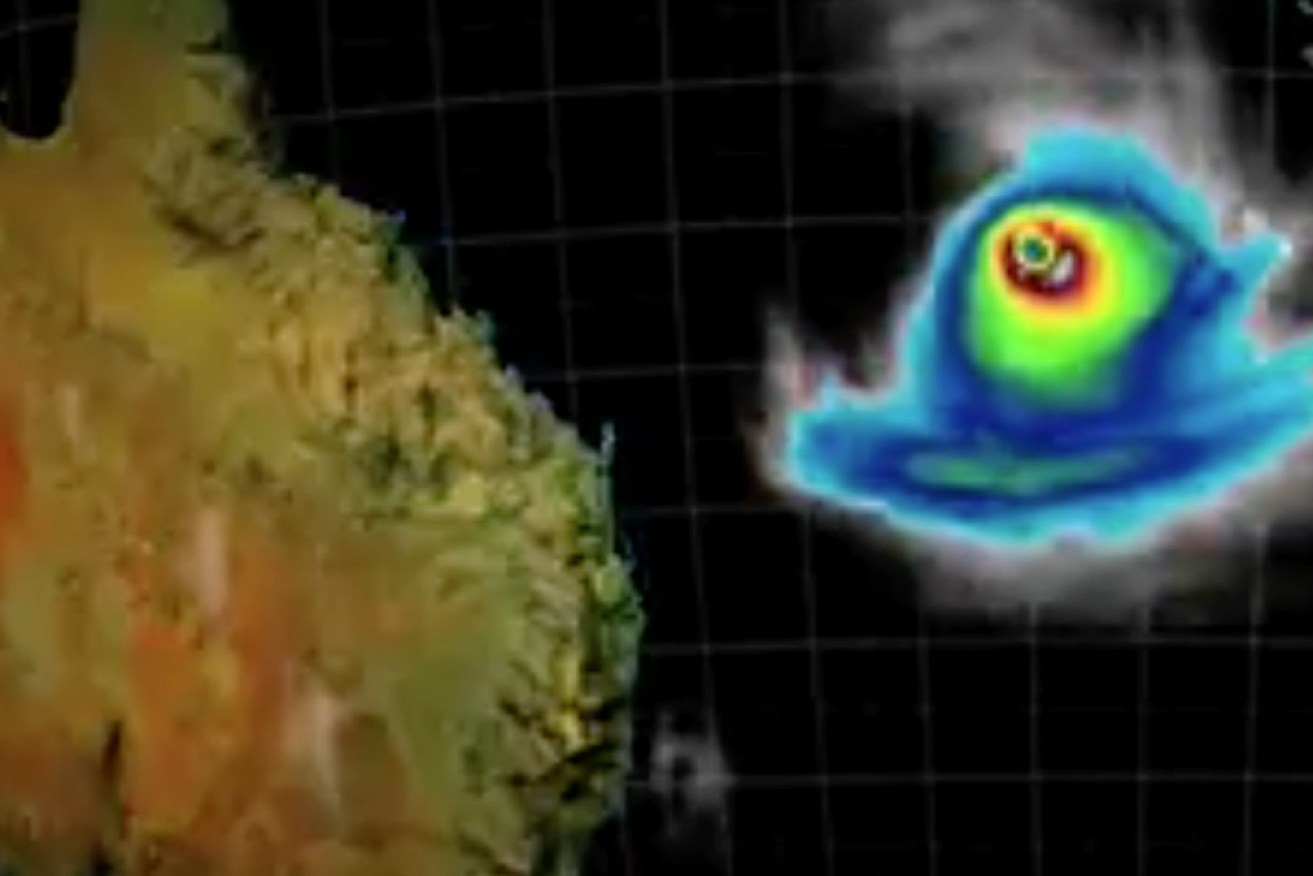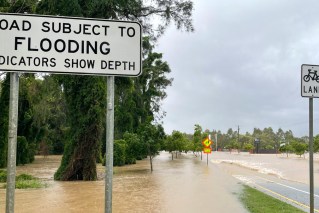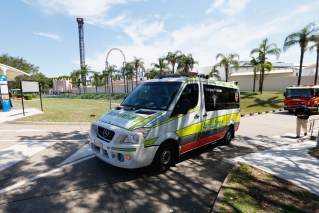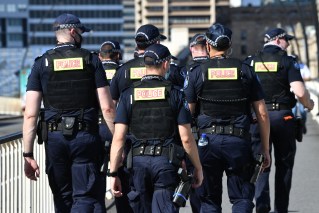Wild weather to bring more rain to sodden parts of Australia


Cyclone Uesi will bring even more rain to already sodden areas of Queensland and NSW.
Queensland and much of the NSW east coast are in for another drenching, with a tropical cyclone bringing more heavy rain and huge seas as it moves closer to Australia.
Tropical Cyclone Uesi is expected to bring waves of up to four metres and more heavy rain to areas that have already endured their wettest spell in decades as it moves south towards New Caledonia.
Queensland towns such as Oakley and Warwick surpassed their monthly average rainfall in a single day, while average February totals have been toppled in Dalby, Applethorpe and Roma.
The falls have been welcomed across the water grid, with storage capacity at almost 60 per cent, up from 56.4 per cent on February 7.
Stanthorpe, in Queensland’s Granite Belt, also received welcome falls after trucking in drinking water in recent months.
On Tuesday, the weather bureau said flooding in Dalby would get worse, while there are mild to moderate flood warnings throughout the state.
Gladstone, north-west of Brisbane, can also expect thunderstorms and heavy rain.
A satellite image of Tropical #CycloneUesi is gathering strengthened on the Coral Sea and is forecast to bring flash flooding and gale-force winds to affecting the portions of Queensland and the NSW. The cyclone will reach category 3 status by mid-Tuesday before weakening. pic.twitter.com/5gdegwE9fV
— Joint Cyclone Center (@JointCyclone) February 10, 2020
Fiji’s Meteorological Service said Cyclone Uesi, which had reached category-three level on Tuesday afternoon, was tracking towards Australia’s east coast from north-west of New Caledonia.
It will also bring more rain and storms to eastern NSW on Tuesday and Wednesday, with more to come for up to the next week.
It comes after the Bureau of Meteorology recorded up to 550 millimetres of rain in parts of the NSW northern rivers, mid-north coast, Central Coast, Sydney, Blue Mountains and the Illawarra over the weekend.
Queensland is also mopping up after widespread flooding, with SES volunteers called to more than 1000 requests for assistance.
SEVERE THUNDERSTORM WARNING for heavy rainfall with thunderstorms in the Capricornia. Locations which may be affected include Gladstone, Calliope, Miriam Vale and Seventeen Seventy. Warnings: https://t.co/FBmpsInT9o pic.twitter.com/DZeCRu9g2c
— Bureau of Meteorology, Queensland (@BOM_Qld) February 10, 2020
On Tuesday morning, Queensland police rescued a man and woman swept away while riding floodwaters on a blow-up mattress.
They were found clinging to a tree for safety.
Emergency services rescued a man in his 70s from floodwaters in Toowoomba on Monday night, while a teenage driver abandoned his vehicle after it became stuck in the flow.
BOM spokesman Matt Bass said the extreme weather meant many rivers and creeks had resumed flowing after a long dry spell.
“100 millimetres in an hour is very intense sort of rainfall – we don’t see too frequently. So, in that particular area where that rainfall fell, I’m sure there was significant river rises and flash flooding.”

Flood-affected people are evacuated from Townsville over the weekend. Photo: Getty
NSW outlook
Further south, a massive clean-up effort was under way on Tuesday after NSW’s coast was drenched over the weekend.
Sydney recorded its heaviest rain in three decades and was battered by gale-force winds.
More than 15,000 calls for help were made to Fire and Rescue NSW over the weekend – more than three times the calls made during the peak of the bushfire season.
The State Emergency Service and other agencies have completed some 10,000 calls for help, with about 3000 still to be completed on Tuesday.
SES deputy commissioner Daniel Austin said calls were still coming in.
“We’ll work through those … trying to get through [them], particularly open any roadways that might be closed and then do some damage assessment with floodwaters that have occurred potentially into people’s properties,” Mr Austin told ABC TV on Tuesday.
On Tuesday morning, a man was rescued after clinging to a tree for almost 12 hours to escape floodwaters north of Bega, on the state’s south coast.
Tens of thousands of NSW households remain without electricity due to fallen power lines – and have been told to prepare for the blackouts to last until the weekend.
Due to extreme damage on the network we're asking customers still without power to prepare to be out into the weekend. This is at Ourimbah – 1 of the 2,400 hazards crews are working to make safe before we can turn power back on. Safety is our number one priority. pic.twitter.com/9v4y7ycJHm
— Ausgrid (@Ausgrid) February 11, 2020
Flood warnings have been issued for the Hawkesbury River at North Richmond, Windsor and Sackville, for the Nepean River at Wallacia and along the Colo River.
NSW Farmers said rainfall in the state’s north had boosted soil moisture and was a “huge relief” for many livestock producers.
“The psychological boost that this rain has provided is vitally important,” the organisation’s president James Jackson said.
The Rural Fire Service said rainfall since Friday had helped firefighters put out more than 30 fires – some of which had been burning for months.
“It’s been great from a bushfire perspective,” RFS commissioner Shane Fitzsimmons told ABC TV on Tuesday.
Sydney’s parched dams also had a boost with Warragamba Dam at more than 60 per cent capacity – up from 43 per cent a week ago.
-with AAP







